エミール・ガレ/Emile Galle
エミール・ガレは19世紀末のアール・ヌーヴォーを代表する工芸作家です。出身地であるフランスのナンシーを拠点に、ガラス、陶器、家具と幅広い分野で独自の想像力や美学を発揮しました。熱心な園芸家としての一面も持っており、ガレが手がけた工芸品には様々な植物のモチーフが取り入れられています。
1846年、ネオ・ロココの高級食器を製造、販売する父親の一人息子として生まれたガレは、19歳の時にドイツのワイマールに留学し、建築工芸研究所でデッサンやデザインを学びました。帰国後は、父親の工場にてデザイナーとして働き、研鑽を積みます。日本の美術品や古代中国の青銅器、イスラム世界のガラス、古代エジプト美術など、古今東西の美術を研究し、多様な意匠を自由自在に組み合わせる独自のスタイルを確立していきました。ガレが新進作家としての存在感を示し始めたのは、1880年代半ば以降です。特に、1889年に開催されたパリ万国博覧会のガラス部門でグランプリを受賞した際には、貴族や文化人から注文が殺到するようになり、工芸家としての地位を固めていきます。作品に詩文を刻みこみ賛否を呼んだ「ものいうガラス」シリーズや、作家としての転機となった黒いガラス作品を筆頭に、ガレの斬新な創意はとどまることなく革新を続けました。1900年代は、再びパリ万国博覧会でグランプリに輝く一方、経営不振や白血病に苦しめられました。それでも、ドレフュス事件(1894年)をはじめとする社会的な問題に関心を寄せ、政治運動に身を投じながら、その義侠心や憤激を作品へと昇華させました。後期にはガラスによる象嵌技法が用いられたほか、飴細工のように立体的な作品も生み出されており、その高い技術力と進取の気性は健在だったと言えます。
没後100年以上が経過した今も、時空を超越するようなガレのデザインは世界中で愛され、人々の生活に彩りを与えています。
Emile Galle is a renowned artisan of the late 19th-century Art Nouveau movement. Based in Nancy, France, his place of birth, he showed his unique imagination and aesthetics in various fields, including glassware, ceramics, and furniture. He also had a passion for gardening, and his works often incorporated motifs inspired by various plants.
Born in 1846 as the only son of a father who manufactured and sold high-end Neo-Rococo tableware, Galle studied drawing and design at a craft institute in Weimar, Germany, when he was 19 years old. After his return to France, he worked as a designer at his father’s factory, honing his skills. He extensively studied art from different cultures and periods, including Japanese art, ancient Chinese bronzeware, Islamic glassware, and ancient Egyptian art, and developed his unique style by combining diverse motifs. Galle began to establish himself as an emerging artist after in the mid-1880s. Particularly, when he won the Grand Prize in the glassware category at the 1889 Paris Universal Exposition, he started receiving numerous orders from nobles and intellectuals, solidifying his position as an artisan. He continued to innovate relentlessly, driven by his unwavering creative passion, with the controversial “Monumental Glass” series, which engraved poetry into his works and sparked both praise and criticism, and the black glass pieces that marked a turning point in his career, leading the way. In the 1900s, he again won the Grand Prize at the Paris Universal Exposition, but he faced financial difficulties and struggled with leukemia. Nevertheless, he took an interest in social issues such as the Dreyfus affair (1894), and while throwing himself into political movements, he sublimated his chivalrous spirit and anger into his works. In his later period, in addition to using glass inlay techniques and created three-dimensional works reminiscent of candy sculptures, demonstrating his exceptional technical prowess and progressive spirit.
Even after more than 100 years since his passing, Galle’s designs, which transcend time and space, continue to be loved worldwide, bringing color to people’s lives.

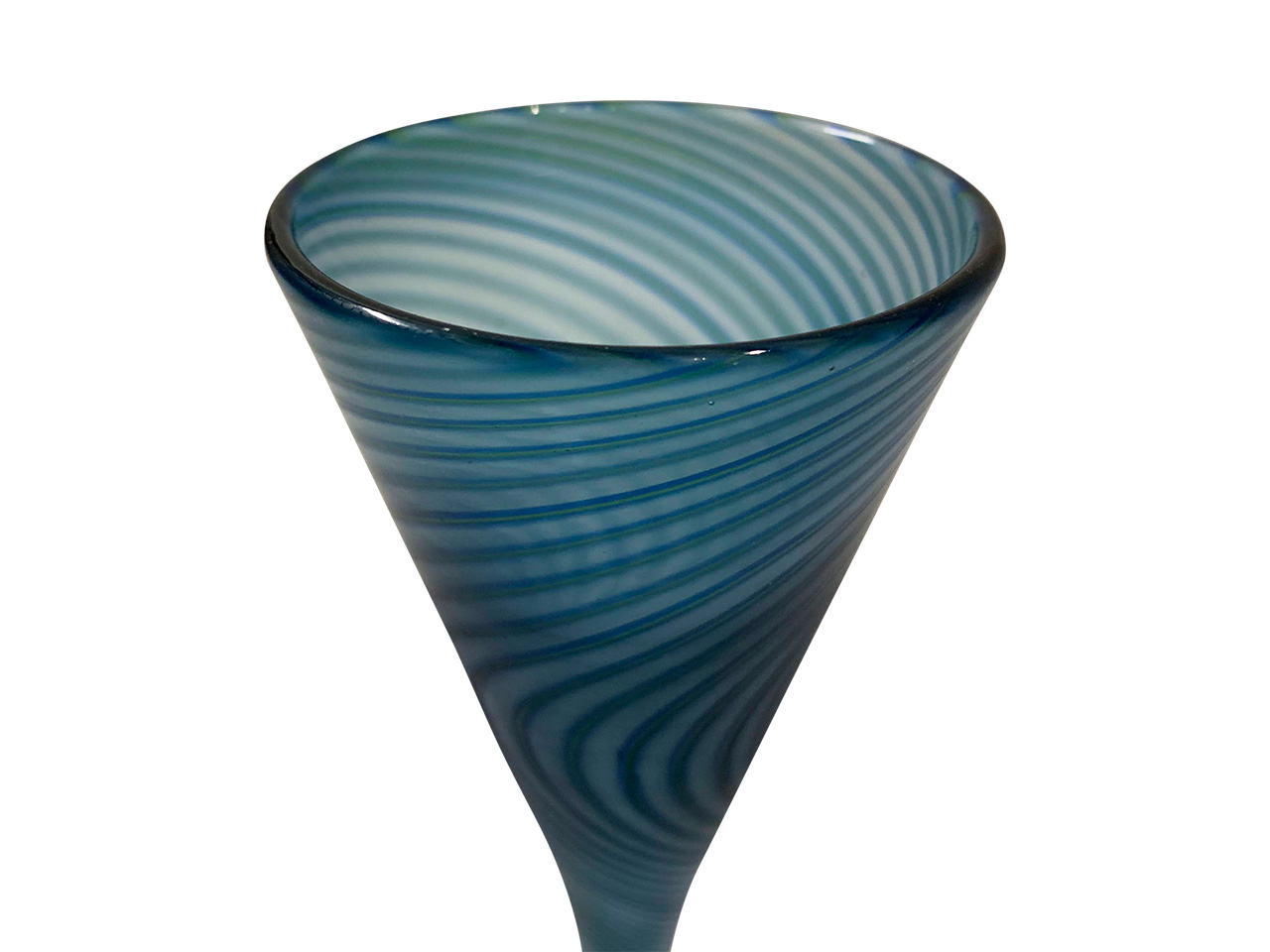
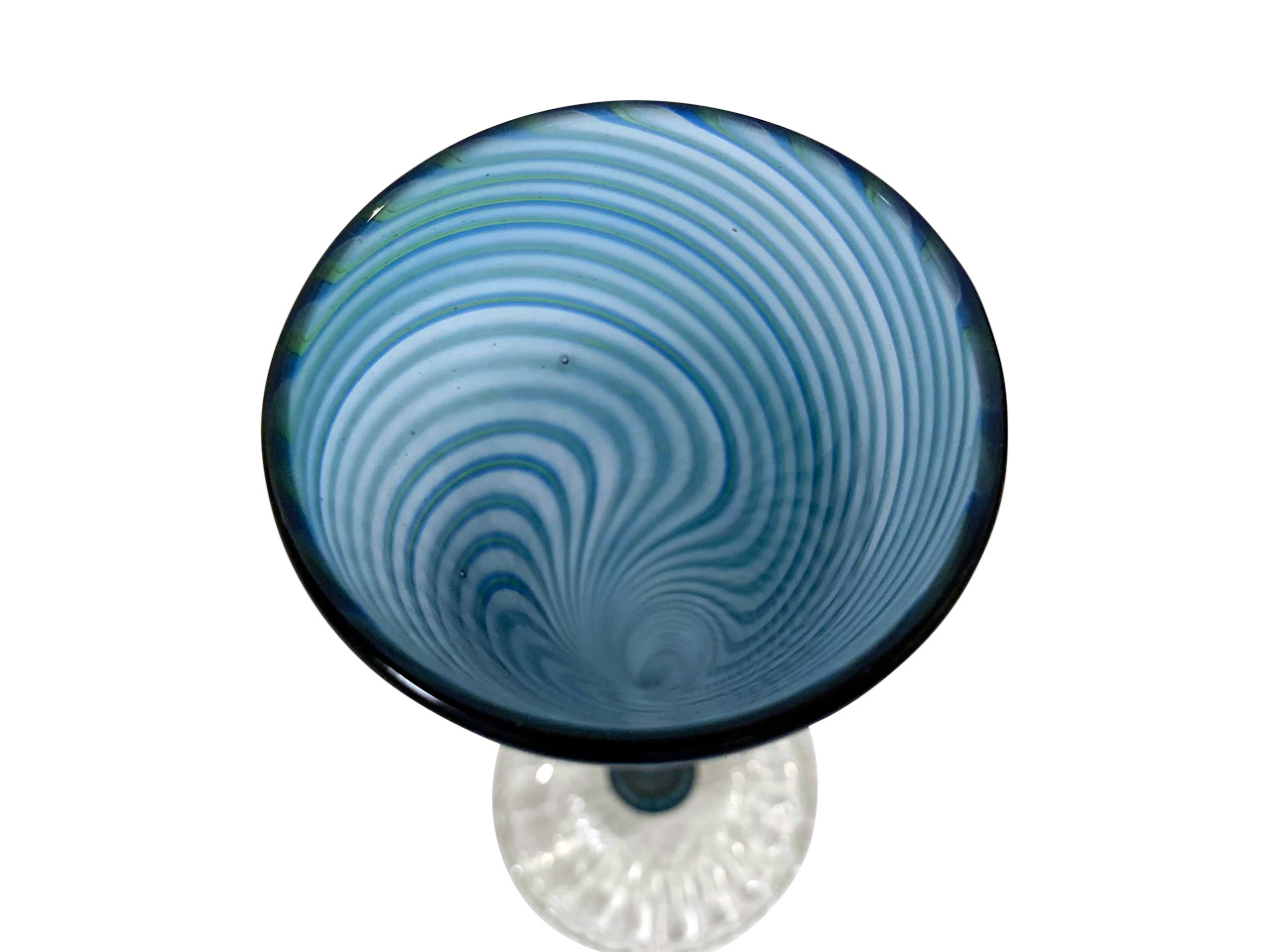
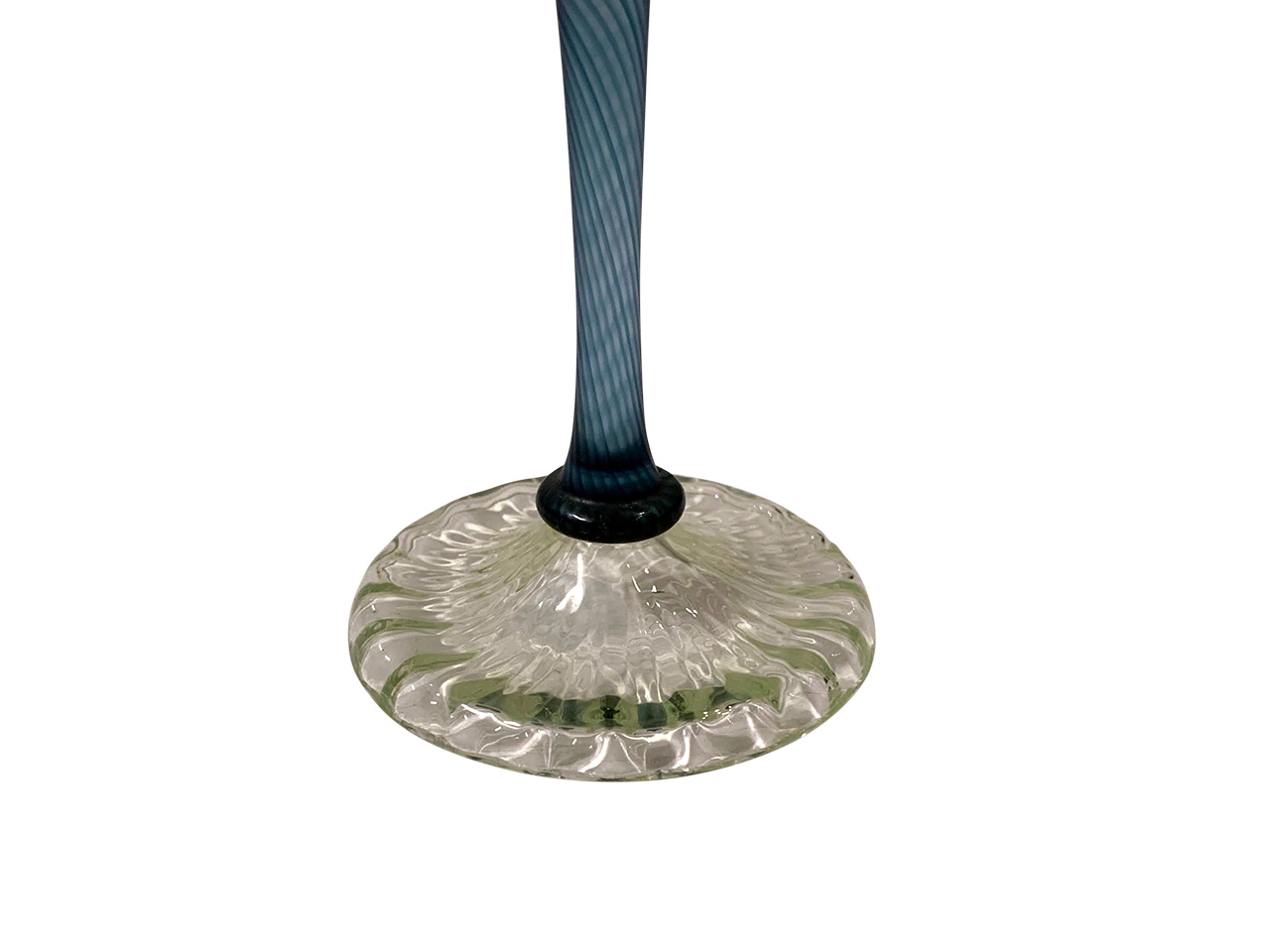
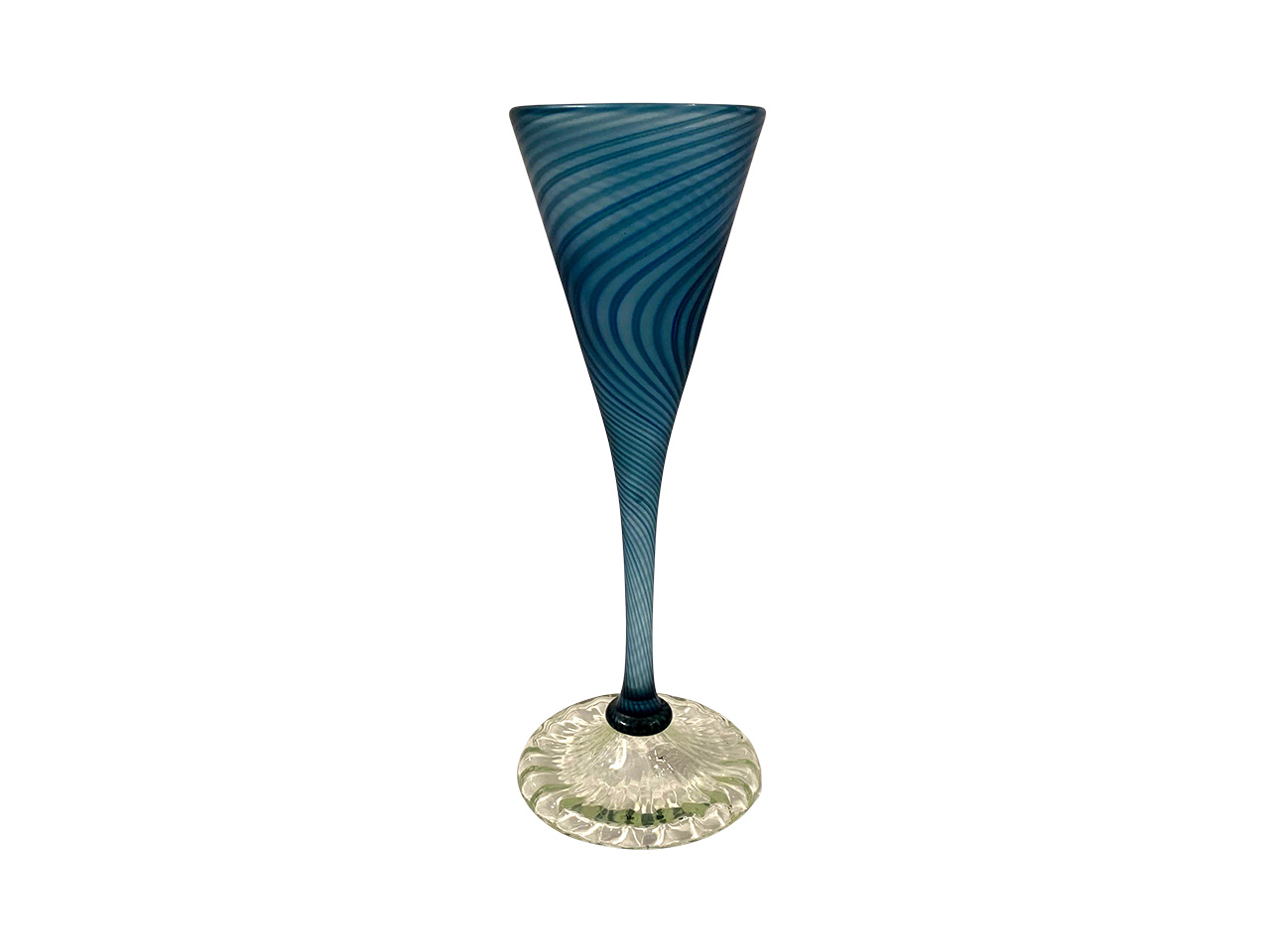
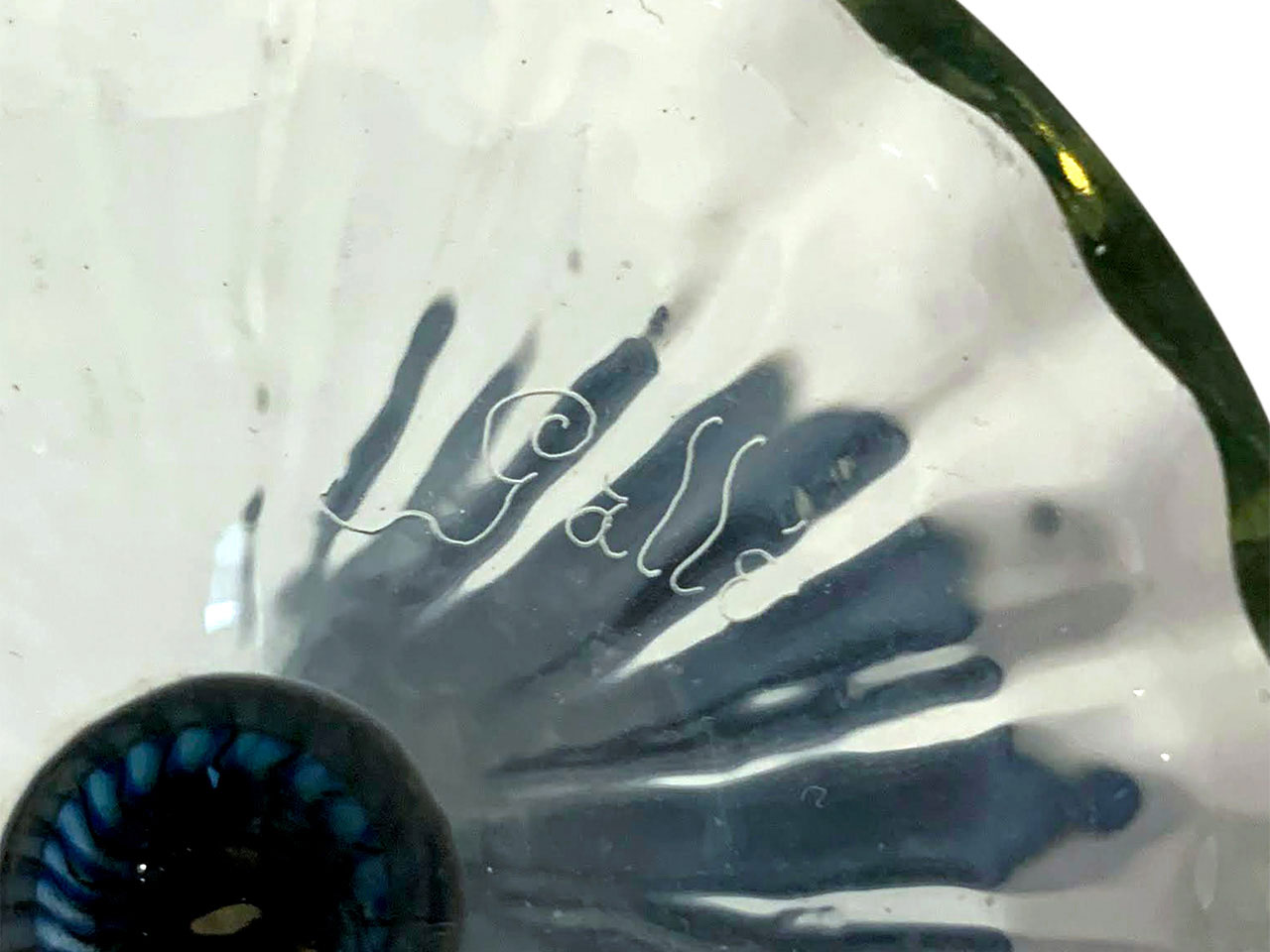
作品名:エールグラス
サイズ:H18.1cm×D6cm(1900~1903年頃)
価格:SOLD OUT
価格は税抜き表示です

